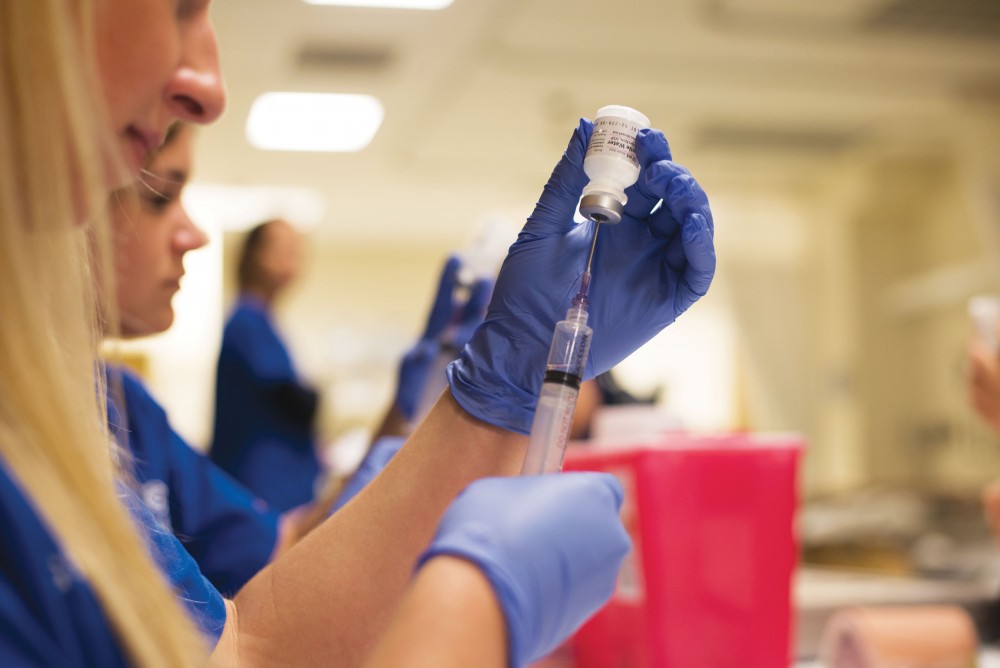Hands-on learning

GVL / Luke Holmes – Megan Buchman practices giving a shot to a test dummy in the Center for Health Sciences building downtown on Monday, Sept. 26, 2016.
Feb 2, 2017
According to the American Telemedicine Association, more than half of all hospitals in the U.S. currently have a telemedicine program, which involves the diagnosis and treatment of patients through the use of technology.
In response to this growing health care trend all around the country, Grand Valley State University has paired up with Answer Health on Demand (AHOD), a Grand Rapids-based company that specializes in telemedicine, in order to provide physician assistant students the opportunity to acquire telemedicine skills through a shadowing experience.
Theresa Bacon-Baguley, associate dean for research in the College of Health Professions, said the addition of telemedicine to the curriculum allows the physician assistant students to incorporate technology into their desired profession.
“We teach (the students) the legal aspects of telemedicine along with how to use the system, which means how to have an appearance on the screen that communicates with individuals through technology,” Bacon-Baguley said.
Physician assistant students are able to have a hands-on role in learning how to use technology in a health care profession through the partnership with AHOD. Classroom instruction, online modules, computers and equipment allow students to gain knowledge of telemedicine, and the students run simulations with each other in order to gain experience. The students also have the opportunity to shadow a physician, thanks to GVUS’s affiliation agreement with AHOD.
Students can pick one of the two options presented to them.
“They can actually go to Answers Health on Demand, who has an office off the East Beltline, or they can observe within their own environment, as long as there is nobody around to listen in,” Bacon-Baguley said. “A physician will connect through the computer with the patient. Then, they will ask the patient if they do not mind if a student listens in. If the patient agrees, the student will be connected on the computer system. On the screen there will be three individuals: the physician, the patient and the student.”
Martina Reinhold, a professor in the physician assistant studies department at GVSU, said giving the students an opportunity to shadow a physician performing telemedicine allows them to keep an open mind when it comes to what they can do in the future.
“They have the opportunity to see it and recognize that they can actually do this when they go out there and could participate in these encounters,” Reinhold said. “We would love for them to have this understanding so they can keep an open mind of what can be done.”
The process of integrating telemedicine into the physician assistant curriculum has been in progress for a couple of years at GVSU. At its inception, a Rural Utilities Service (RUS) grant was written in order to bring funding into the classroom. This was done in order to purchase equipment so students could begin simulating telemedicine in classrooms with each other. Students are also beginning to participate in shadowing with AHOD as part of the curriculum.
“This has already started,” Reinhold said. “The students started going out (Wednesday), Jan. 18. Every week, two students go to Answers Health and observe. Two different students go throughout the entire year. “
Both Reinhold and Bacon-Baguley think telemedicine, which is increasingly being used in medical practice, is truly the way of the future.
“It’s exciting to train our students not just for today but for tomorrow,” Bacon-Baguley said.

























